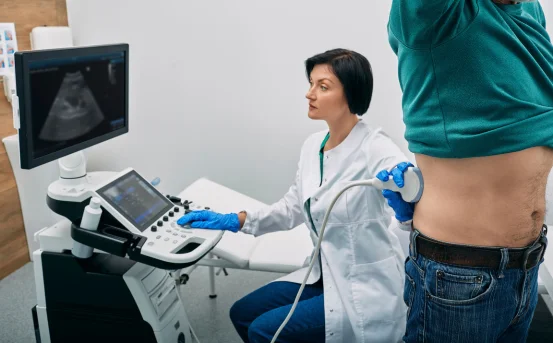Chronic Obstructive Pulmonary Disease (COPD) is a progressive lung condition that affects millions of people worldwide. It limits airflow in the lungs and makes it difficult to breathe over time. Understanding the early and advanced symptoms of chronic obstructive pulmonary disease is essential for early diagnosis and effective treatment.
COPD includes conditions like chronic bronchitis and emphysema and is primarily caused by long-term exposure to irritants such as cigarette smoke, air pollution, and occupational dust or chemicals.
Why Early Recognition of COPD Symptoms Matters
The symptoms of chronic obstructive pulmonary disease often develop slowly and may go unnoticed in the early stages. However, identifying them early allows for better disease management, lifestyle changes, and treatment strategies to improve quality of life and prevent serious complications.
Common Symptoms of Chronic Obstructive Pulmonary Disease
- Persistent Cough :- One of the first signs of COPD is a chronic cough that lasts for weeks or even months. This cough is often referred to as a “smoker’s cough” and may produce mucus (sputum).
- Shortness of Breath (Dyspnea) :- Breathlessness is one of the hallmark symptoms of COPD. Initially, it may occur only during physical activity but can worsen over time to the point where it occurs even at rest.
- COPD causes the airways to narrow, leading to wheezing—a high-pitched whistling sound during breathing. This may be accompanied by chest tightness or discomfort.
- Frequent Respiratory Infections :- People with COPD are more prone to lung infections like bronchitis and pneumonia. These infections can worsen symptoms and accelerate lung damage.
- Excess Mucus Production :- Excessive mucus or phlegm production is common, particularly in chronic bronchitis—a type of COPD. This symptom is worse in the morning and may worsen during colder weather or exposure to irritants.
- Fatigue and Lack of Energy :- Reduced oxygen levels and the effort required for breathing can leave COPD patients feeling constantly tired. This fatigue may interfere with work, hobbies, and everyday tasks.
- Cyanosis (Blueness of Lips or Fingertips) :- In advanced COPD, oxygen levels drop significantly, leading to cyanosis—a bluish tint to the lips, fingernails, or skin. This is a sign of severe oxygen deficiency.
- Unintended Weight Loss :- As COPD progresses, weight loss can occur due to increased energy usage during breathing and reduced appetite. This is a serious symptom and may be linked to COPD cachexia, a wasting syndrome.
- Swelling in Ankles, Feet, or Legs :- Swelling, known as edema, may appear in the lower limbs due to poor circulation or right-sided heart failure, which can be a complication of COPD.
When to See a Doctor
Early intervention is crucial. You should consult a healthcare provider if:
-
You experience a chronic cough or breathlessness that worsens with time.
-
Your mucus changes color or increases.
-
You feel tightness in your chest or hear wheezing.
-
You experience fatigue that interferes with daily life.
Diagnosis and Testing
If symptoms suggest COPD, doctors may perform:
-
Spirometry :- a breathing test that measures airflow.
-
Chest X-ray or CT scan :- to assess lung damage.
-
Arterial blood gas analysis :- to measure oxygen and CO₂ levels.
-
Oximetry :- to track oxygen saturation in blood.
Causes and Risk Factors of COPD
While symptoms are the focus of this blog, understanding causes can help in prevention:
-
Smoking leading cause in up to 90% of COPD cases.
-
Air pollution and occupational hazards
-
Genetics (e.g., Alpha-1 Antitrypsin Deficiency)
-
Chronic respiratory infections in childhood
How Symptoms Progress Over Time
COPD is a progressive condition. Symptoms start mildly and become severe over time if untreated. Patients may eventually require oxygen therapy, pulmonary rehabilitation, or even surgical interventions like lung volume reduction.
Conclusion
Recognizing the symptoms of Chronic Obstructive Pulmonary Disease at an early stage is the first step toward better management and improved quality of life. If you or a loved one are experiencing persistent cough, breathlessness, or fatigue, it’s important to seek medical attention promptly.
Managing COPD involves a combination of medications, lifestyle changes, pulmonary rehab, and in some cases, oxygen therapy. Early diagnosis and proactive care can make a significant difference.























